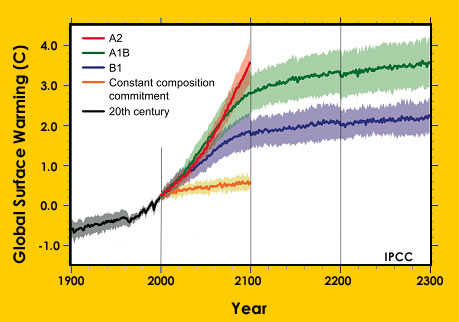Click on image for full size
Image Courtesy of the Wikipedia Commons
Health Standards Exceeded by Ozone Pollution in Wildfires
News story originally written on October 9, 2008
For a long time, scientists have known that wildfires emit particles and gases into the air, and this affects air quality. But there hasn't been much research to determine how severe those impacts are. Through a new study, scientists have learned that wildfires can boost ozone pollution to levels that violate U.S. health standards.
The researchers are from the National Center of Atmospheric Research (NCAR), and they focused on California wildfires that broke out in September and October 2007. They learned that the wildfires caused ground-level ozone to spike to unhealthy levels across a large area, including much of rural California as well as neighboring Nevada. Ozone was three times more likely to exceed safe levels when fire plumes blew into a region than when no plumes were present.
"It's important to understand the health impacts of wildfires," says NCAR scientist Gabriele Pfister, the paper's lead author. "We found that ozone can hit unhealthy levels even in places where you are not seeing any smoke."
Fires worsen ozone levels by releasing nitrogen oxides and hydrocarbons, which can form ozone near the fire or far downwind as a result of chemical reactions in sunlight. While ozone in the stratosphere benefits life on Earth by blocking ultraviolet radiation from the Sun, ozone in the lower atmosphere can trigger a number of health problems. These range from coughing and throat irritation to more serious problems, such as aggravation of asthma, bronchitis, and emphysema. Ground-level ozone pollution also damages crops and other plants.
"Wildfires are expected to worsen in the future, especially as our climate grows warmer," Pfister says. "But we are only now beginning to understand their potential impacts on people and ecosystems, not only nearby but also potentially far downwind."















